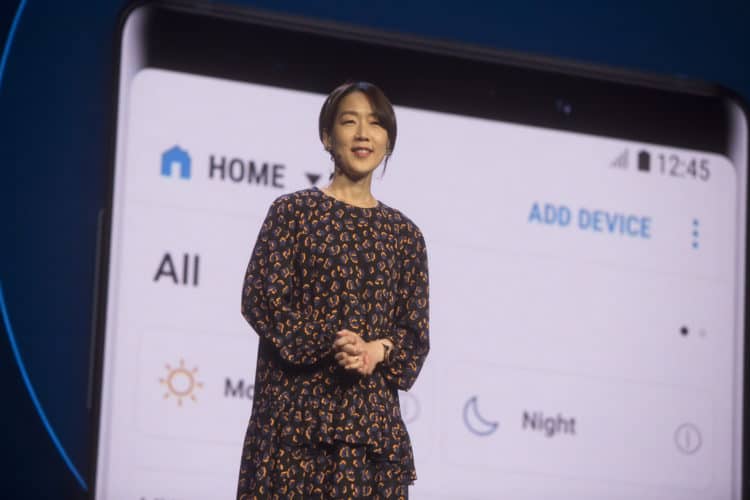The company that sells more than 500 million devices every year is now diving fully head-on into developing the internet of things (IoT) ecosystem.
“We promised that by 2020, all Samsung devices would be AI-enabled and connected to each other,” said Eui-Suk Chung, EVP, Head of Software and Artificial Intelligence, at the recently concluded Samsung Developers Conference (SDC 2018) in San Francisco, California.
Central to the Korean company’s idea of a fully connected device strategy is its voice assistant Bixby, which it hopes to transform into a fully scalable AI platform.
“Bixby is our singular commitment to AI. We have to reimagine Bixby from a simple voice assistant to a scalable AI platform,” said Chung.
The plan is to put Bixby into more devices -- Samsung TVs, refrigerators, tablets and speakers; connect it to third-party devices in the future; open Bixby to developers and set up a Bixby marketplace.
Part of the plan is also to expand the Bixby service to more languages, according to Chung.
Samsung first unveiled Bixby in March 2017 along with the launch of the Samsung Galaxy S8 and S8+ and the Samsung Galaxy Tab A.
It has since been made available in its Family Hub 2.0 refrigerators, which are the first non-mobile Samsung products to be fitted with a virtual voice assistant.
In February 2017, Samsung bought the team that created Apple’s Siri, San Jose-based startup Viv Labs for $215 million. In October, it announced Bixby 2.0 in its annual developer conference also held in San Francisco.
“There are no limits to what you can build with Bixby,” said Dag Kittlaus, Co-Founder and CEO of Viv Labs, at SDC 2018 as he unveiled the Bixby Developer Studio.
Building an ecosystem
It is an incredibly exciting time to be working in IoT, according to Jaeyeon Jung, VP for Engineering at Samsung.
“Endless opportunities to connecting new ways to make our cities, cars, and homes smarter and our lives easier. Of course, this market is poised for massive growth to more than $500 billion by 2021,” she said.
Jung noted, however, that “IoT is still too fragmented.”
“Billions of devices spread across different infrastructures all offering different experiences for consumers. Delivering the dream of a truly connected world can be easier,” she said.
To make this happen for Samsung, it introduced the SmarThings Cloud and the SmartThings App last year, both of which allow developers and people to manage and control all of their Samsung-connected and other compatible devices.
Jung claims that SmarThings connects people and devices in over 300 markets around the globe today and the company is on an aggressive push to explore new partnerships with device makers.
One of the partnerships it has sealed recently is the collaboration with Korea Power Exchange to create a service designed to control and manage energy consumption during peak periods when the price is high.
“KPEX alerts us when energy demand is high and using the SmartThings Cloud, we reduce the energy usage of your connected appliances, lowering your utility bills,” she said. “This is the power of SmartThings, letting energy providers and consumers work together to make a positive impact on the power grid.”
Powering the smart home
Samsung executives have explained an elaborate plan to connect people and devices at home and outside, including controlling the light and room temperature at home, controlling any device in the kitchen or while in the car, optimizing sound from the home speaker based on one's location inside the house.
But Samsung sees an important role for television in IoT.
Pedro Freitas, Director of SmartThings at Samsung, disclosed that the company is making its IoT ecosystem complete with the TV's big screen acting as a dashboard for all connected devices and appliances, and it can be controlled remotely with voice.
"Starting this December, we are releasing a new voice media control API so that partners can leverage Bixby to create voice-enabled TV applications," he said.
Netflix, Hulu, HBO Now and Spotify are reportedly collaborating with Samsung in introducing innovations in this area.



